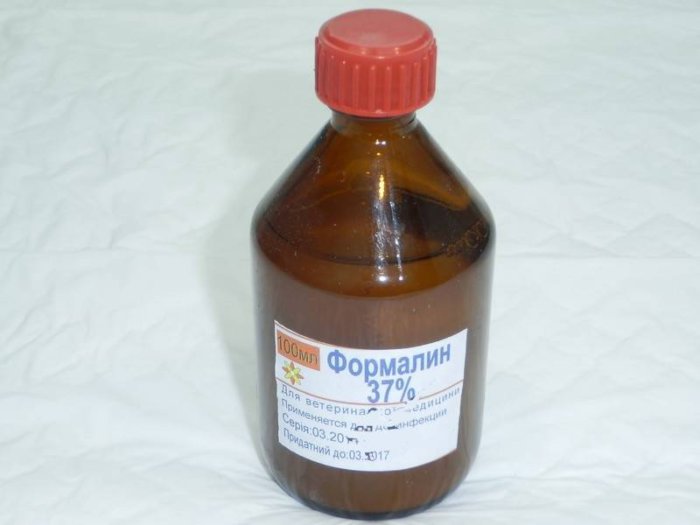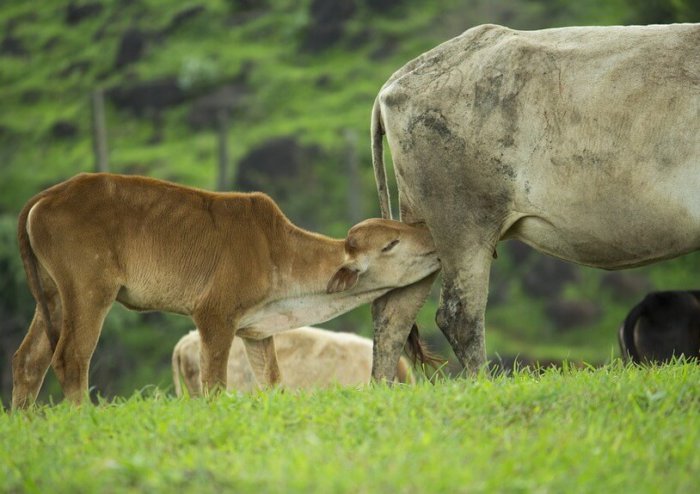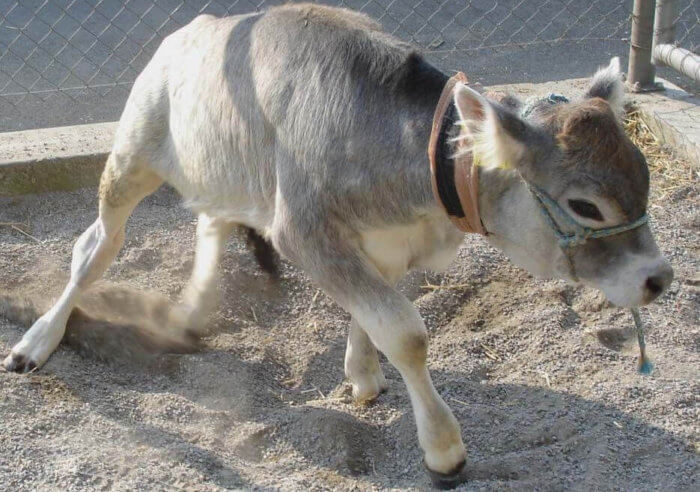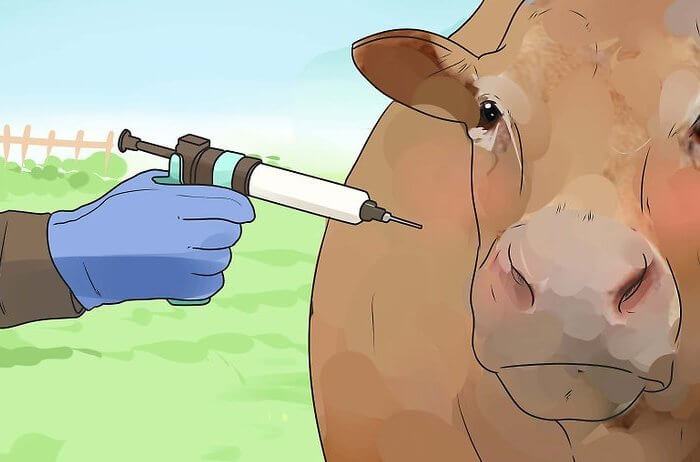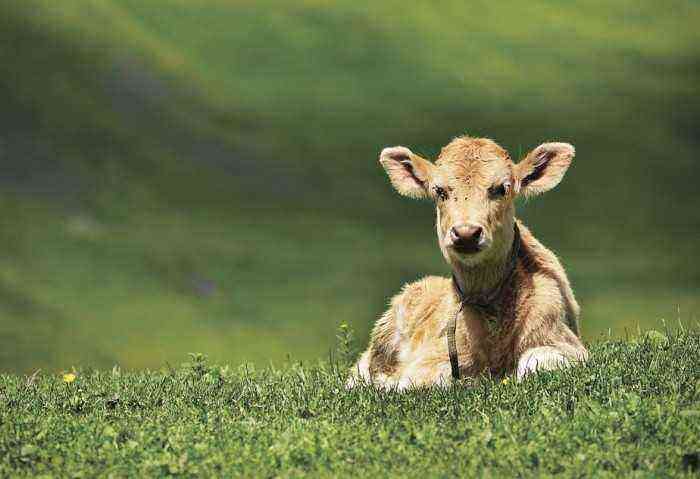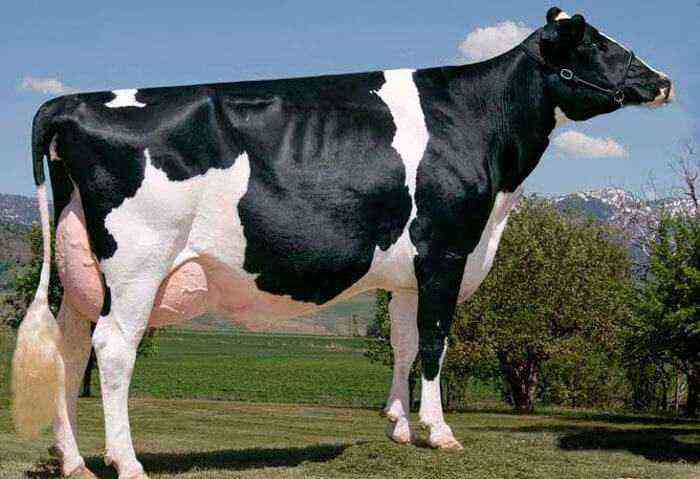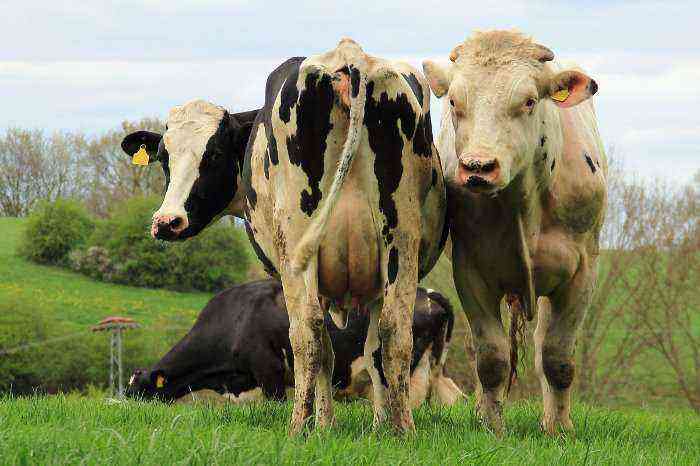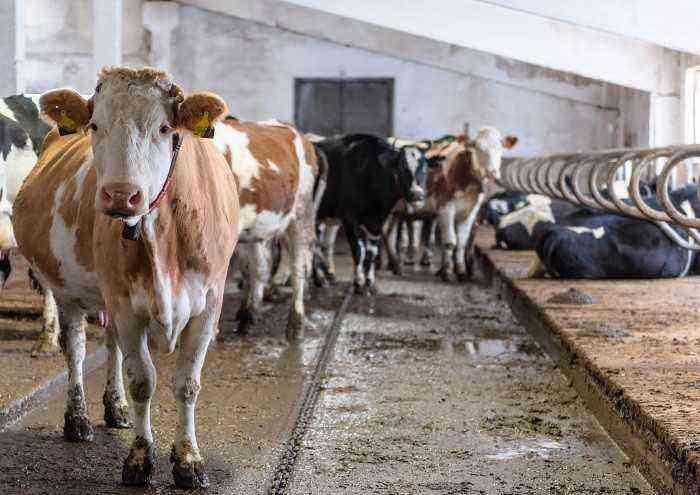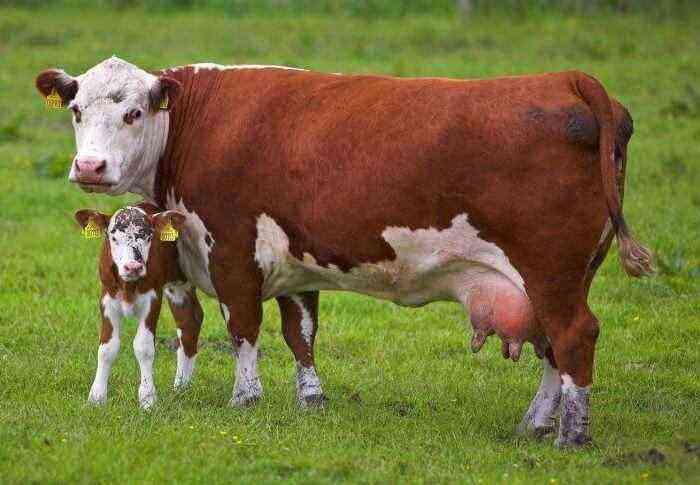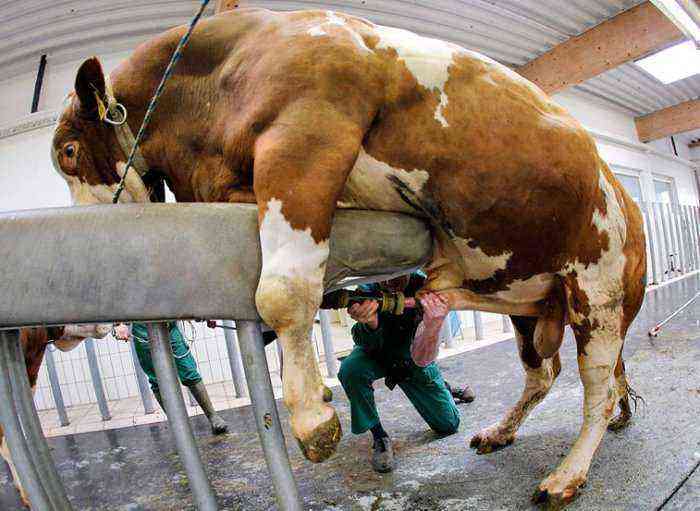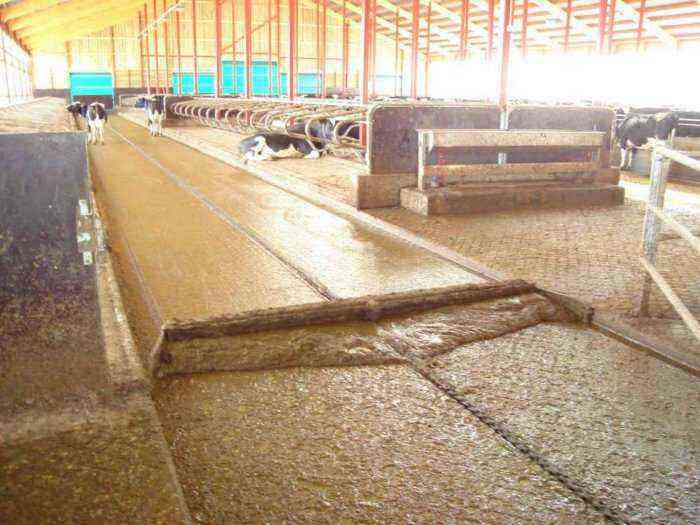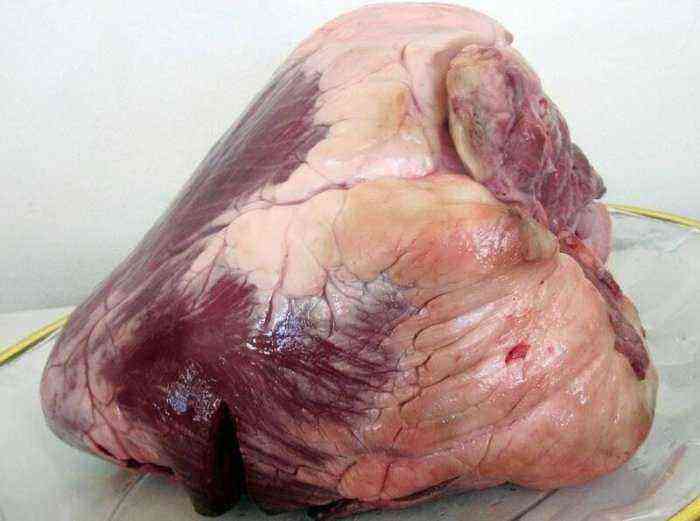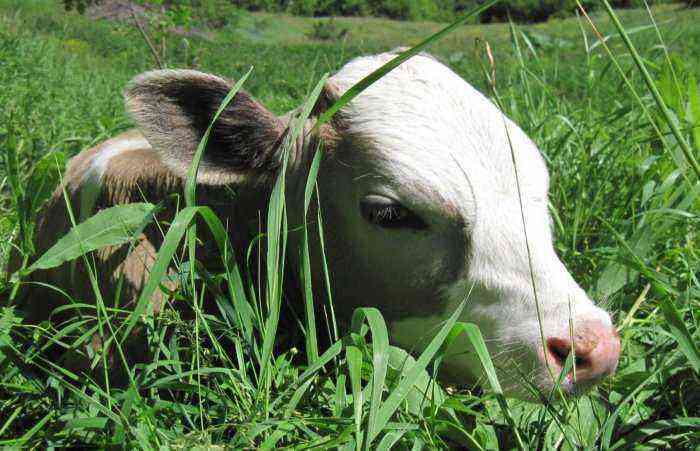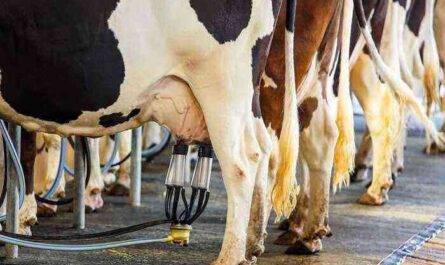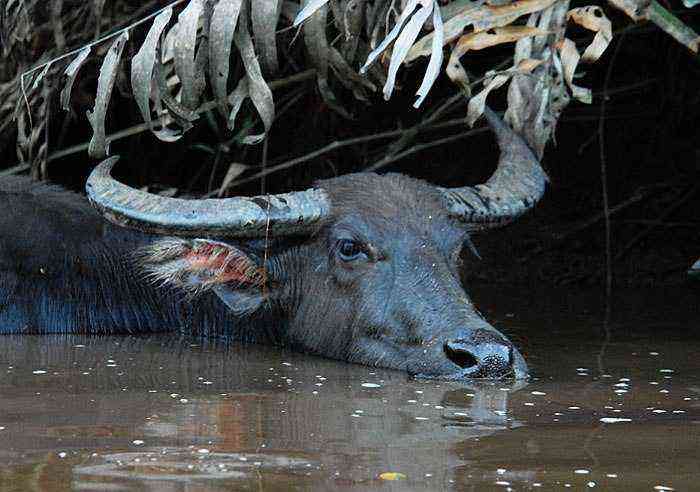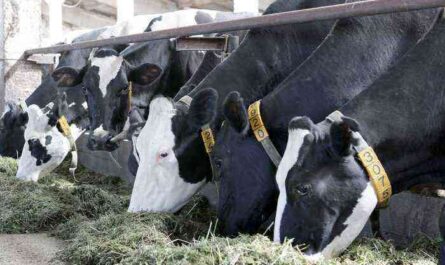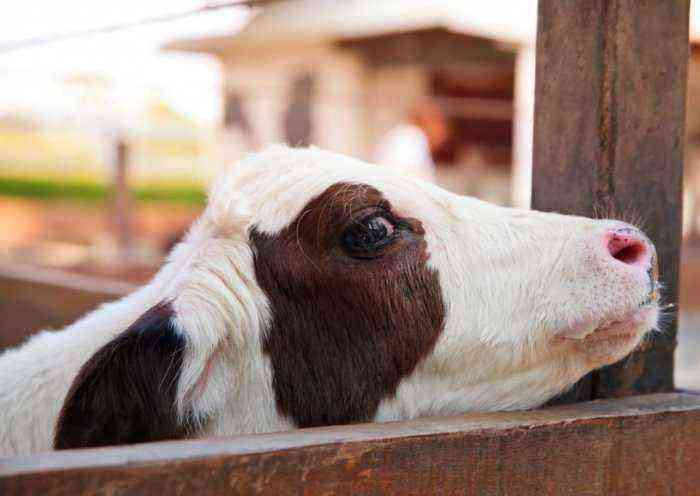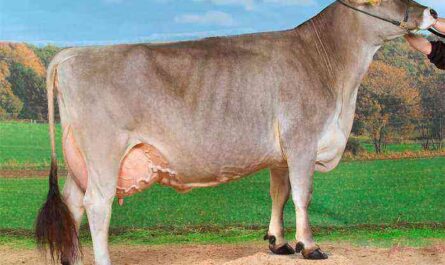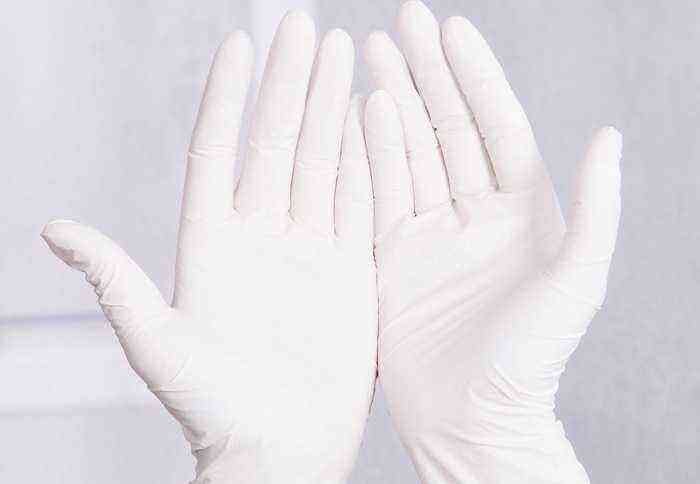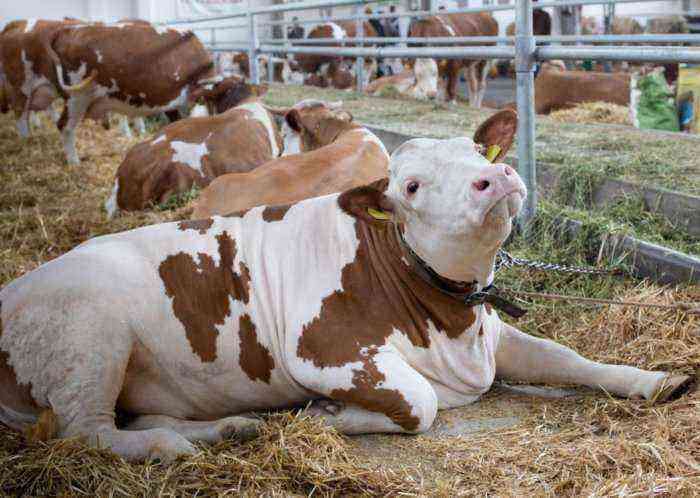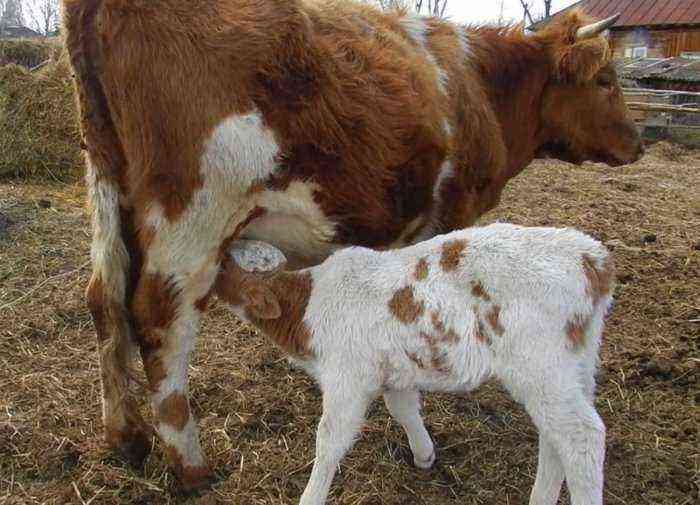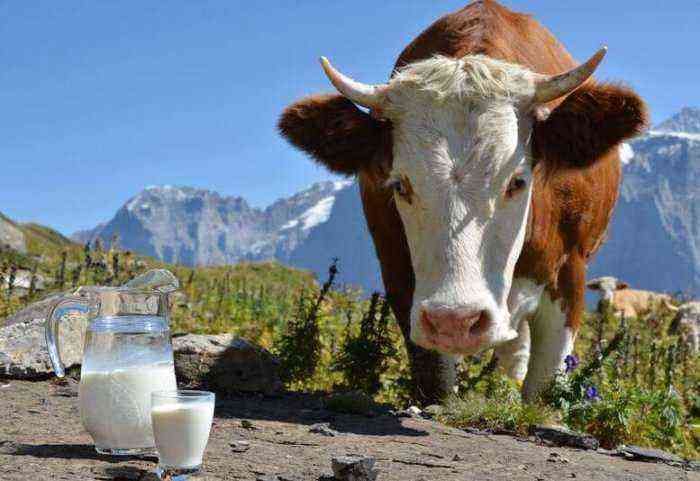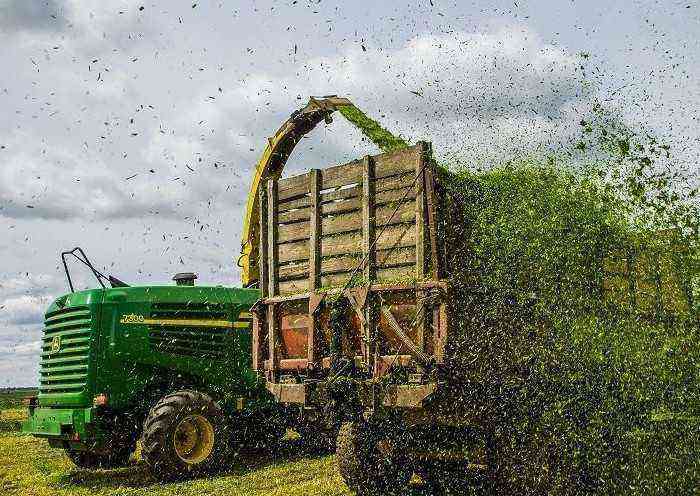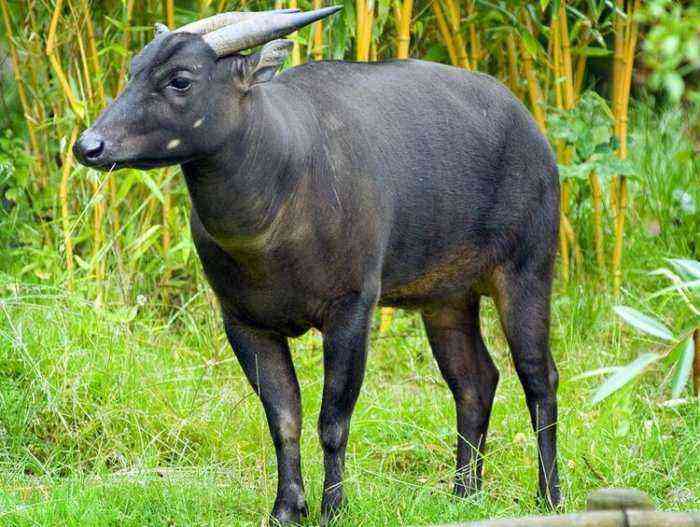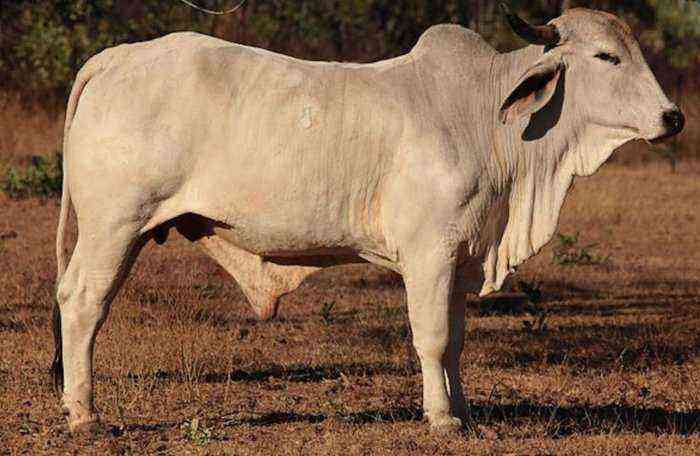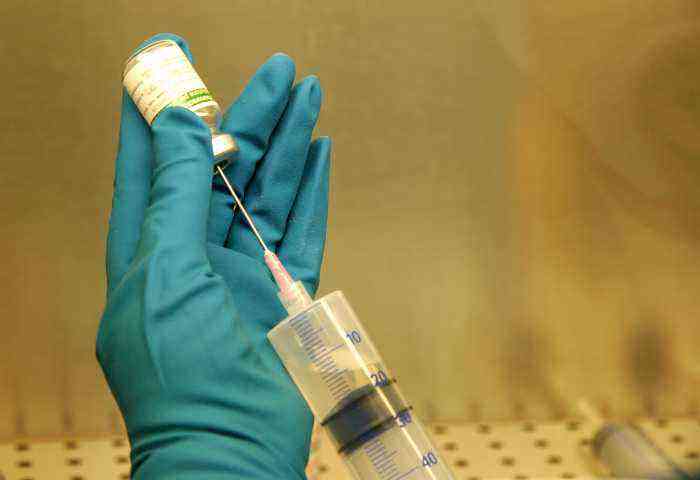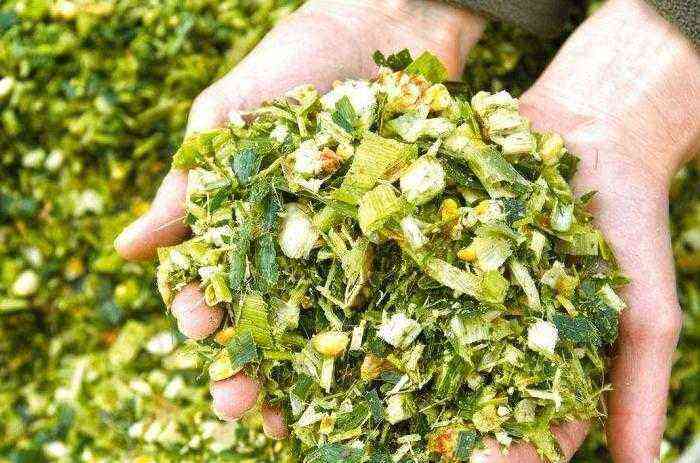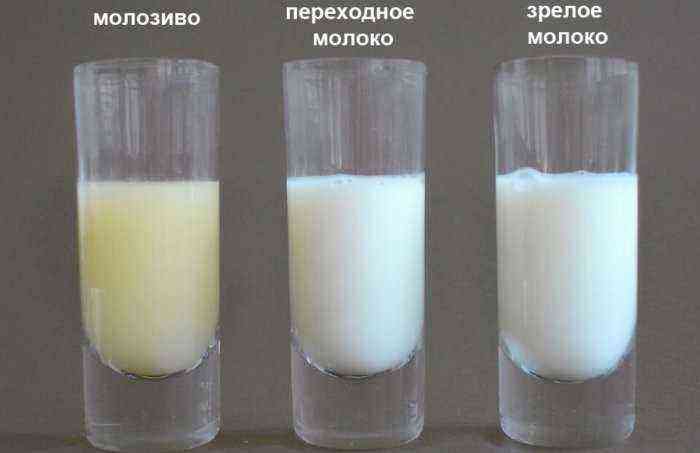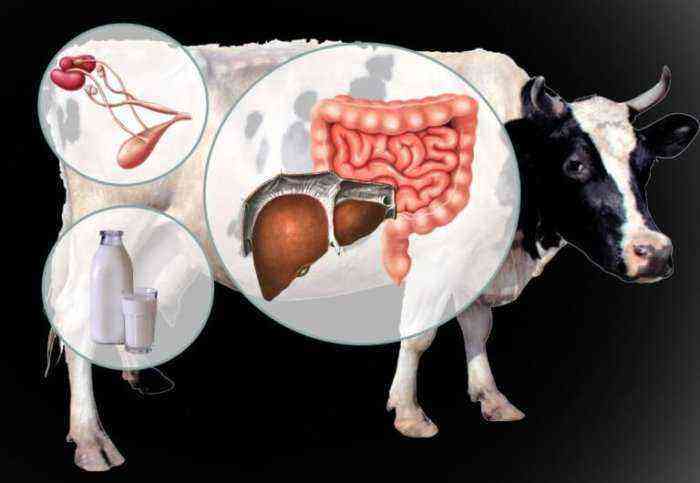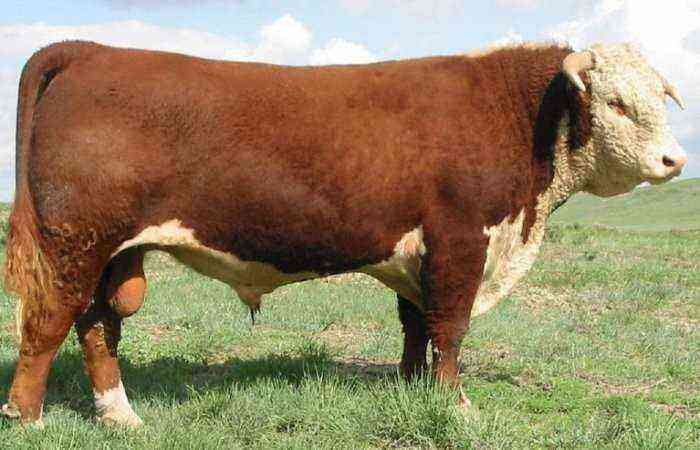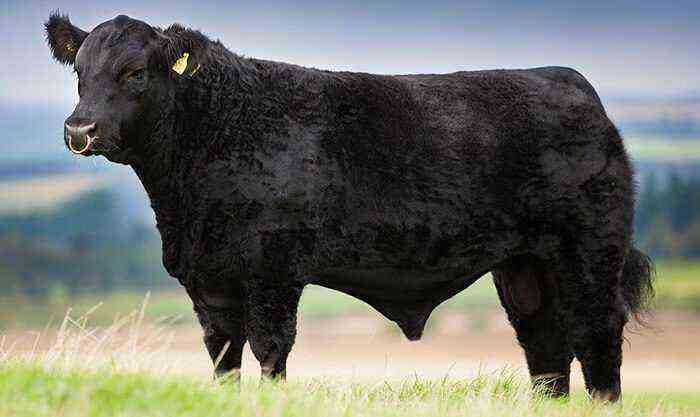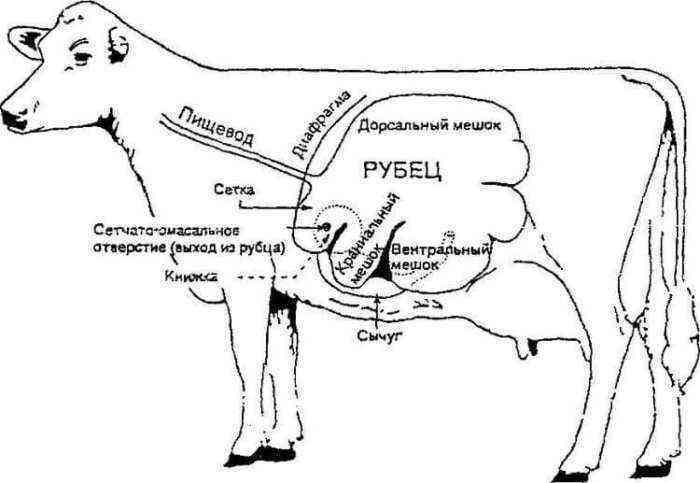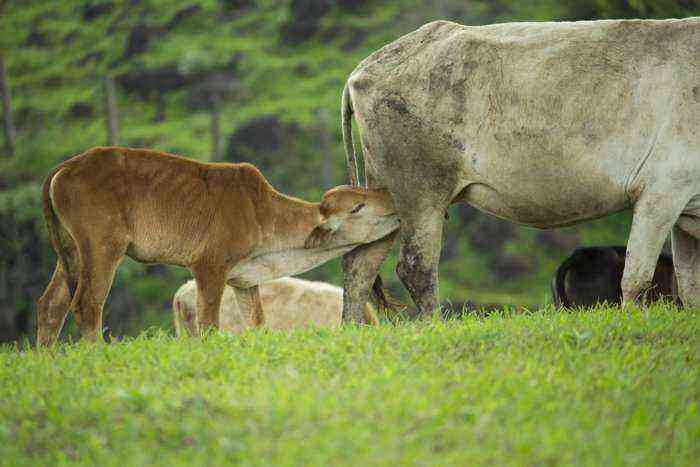Emphysematous carbuncle of cattle (emkar) is a dangerous infectious disease that causes a special genus of bacteria. It can cause serious harm to livestock, and although today the disease manifests itself mainly in single outbreaks, the breeder still needs to clearly know the main symptoms and ways to prevent the disease. This will allow timely recognition and prevention of mass epidemics.
Treatment of a cow from emkar
What is a disease?
Emphysematous carbuncle is an infectious disease that in cattle is manifested by damage to the muscles and joints. Painful swellings appear on the affected areas, fever develops quickly. Emkar in young cattle is often accompanied by blood poisoning, which quickly leads to the death of the calf.
In cows, this disease was isolated as an official disease only in the 1875th century. Prior to this, such swelling on the skin and joints was considered one of the varieties of anthrax. In 1884, Otto von Bellinger proved that emphysematous carbuncle is a separate disease that requires an individual approach in treatment. In 1925, the causative agent of the disease was isolated for the first time. By XNUMX, the first effective vaccine had been developed on its basis.
Reference. To date, emcar krs is distributed throughout the world. Isolated cases of the disease occur in various regions of Russia.
Causes of appearance
The causative agent of emkar in cows is Clostridium chauvoei, a special anaerobic bacterium that has a rod-shaped shape. It is most often introduced into the body of animals in the form of spores from the soil and feed or through contact with the waste products of infected animals.
Mature clostridia are extremely sensitive to light and oxygen. But in the spore stage, the body’s resistance to external factors increases significantly. To destroy a microorganism in this form, it is necessary:
- boiling for 2 hours;
- exposure to sunlight for 24 hours;
- steaming at a temperature of 110 degrees – 40 minutes;
- exposure to a solution of sublimate – 10 minutes;
- treatment with formalin solution – 15 minutes.
formalin solution
There are several ways for the pathogen to enter the body of a cow. Among them, the main ones are the following:
- Grazing on common pastures with low vegetation. Clostridia can live up to 10 years in the ground as spores. And if an animal, in an attempt to pick greens, captures part of the soil with spores, the pathogen quickly develops and multiplies in the body.
- Use of wetlands as a source of water for cows. In water, the bacterium survives for six months.
- A meal in which the spores have fallen along with dung particles from infected individuals. Immediately after infection, the cow becomes a source of bacterial spores.
- Insect bites. Scientists have proven that emkar is transmitted through ticks.
- In some cases, the pathogen enters the body through wounds and cracks in the skin.
The following factors contribute to the development of the disease:
- mowing hay in communal meadows where private livestock often graze;
- an increase in the number of private livestock that do not undergo timely vaccination;
- improper disposal of dead animals by their owners, who often leave the corpses right on pastures;
- refusal to carry out periodic vaccinations in farms;
- the presence of primary diseases, suggesting the appearance of cracks and wounds on the mucous membranes of the mouth.
Also, the disease often develops in animals with high fatness. For the active development and reproduction of bacteria, a large amount of glycogen is needed. Such a substance is found in large quantities in the muscles of beef cows.
The greatest number of outbreaks of the disease can be traced during the summer-autumn period, when livestock is actively grazing. In winter and early spring, infection can occur only when feeding with feed harvested in infected areas.
Diseases are most susceptible to cattle at the age of 3-4 months to 4 years. If the farm is classified as unfavorable in terms of emkar, then the cows that are kept in it, after 4 years, have strong immunity. In young animals up to 3-4 months, there is also a high resistance of the organism. It develops due to antibodies that enter the calf’s body with mother’s milk.
The calf receives its mother’s antibodies with milk.
Symptoms
When a microorganism enters the body of a cow through the digestive tract or open wounds on the body, the microorganism undergoes an incubation period. It can last from 24 hours to 5 days. During this time, the pathogen moves to areas of the body with the largest glycogen stores. These include:
- thigh muscles;
- neck;
- muscle tissue of the chest;
- croup.
In the presence of a sufficient amount of the nutrient, the spore quickly transforms into the form of a mobile rod. Clostridia at this stage actively multiply. At the same time, in the process of vital activity, they quickly affect the nearest tissues and blood vessels, disrupting their function. In addition, the bacterium secretes special toxins that depress the immune system, cause inflammation and gradual tissue necrosis.
Emphysematous carbuncle in cattle can manifest itself in three main forms:
- acute;
- super-sharp;
- atypical.
The acute form is characterized by the following symptoms:
- a sharp increase in body temperature to a mark of 41 degrees and above;
- the appearance in the area of the hips, croup, sternum and pharynx of edematous swelling (at first they are hot and painful, and eventually become completely cold, and the soreness is replaced by a complete lack of sensitivity);
- skin color in swollen areas changes to dark red;
- lymph nodes are enlarged;
- if the hips and croup are affected, the cow has severe lameness, dragging of the legs, or lack of mobility in the joints.
Calf dragging its feet
With light palpation of carbuncles, a characteristic crack is heard, which is accompanied by a rupture of necrotic tissues. If such a swelling is opened, a dark foamy liquid will flow out of it.
In addition to the most pronounced signs, the disease is also accompanied by significant changes in the general condition and behavior of the cow. These include:
- general depression;
- complete or partial lack of appetite;
- increased breathing and heart rate;
- the appearance of characteristic foamy discharge around the nasal cavity and mouth.
In an acute course, the disease can last from several hours to 1-2 days. By the end of this period, the body temperature of the cattle drops below normal. At the same time, it is no longer possible to save the animal.
The hyperacute form of emkar is observed, as a rule, in young individuals (up to 3 months). It is accompanied by such clinical manifestations:
- severe fever;
- lack of appetite;
- general oppression;
- no swelling on the body.
Hyperacute emphysematous carbuncle quickly causes sepsis in the calf. In this case, death occurs within 6-12 hours from the moment of infection. Treatment in such a case is practically useless, since due to the lack of obvious signs, it is not possible to diagnose infection with Clostridium.
As for the atypical (abortive) form of the disease, it develops exclusively in weak and old representatives of the herd. It is accompanied by a slight increase in temperature, lack of appetite, weakness of the animal. Carbuncles on the body in this case do not appear, but with tactile contact, pain can be traced in certain areas of the muscles.
In the case of atypical emkar, recovery occurs on its own within 1-5 days.
Diagnostics
Since the described disease in atypical and hyperacute forms does not have pronounced characteristic signs, and in the acute form it is similar to a number of other diseases, its diagnosis is carried out in a complex manner. For this, the following are taken into account:
- Clinical signs of the disease.
- Results of a laboratory research.
- Data obtained during the pathoanatomical examination of the body of the animal.
Laboratory analysis
This approach is implemented by bacteriological research. For its implementation, swabs are taken from the affected tissues, muscle particles, a sample of secretions from swelling. Material for the accuracy of the study is taken no later than 2-3 hours after the death of the cow.
Bacteriological research
Laboratory diagnostics is carried out by several methods:
- The source material is stained with special preparations that react only to a certain type of bacteria.
- The pure culture is isolated in meat-peptone broth. In the future, the characteristics of the pathogen are studied to exclude pathogens of other diseases.
- The derived culture is administered subcutaneously to guinea pigs, after which the characteristic clinical signs are diagnosed.
Pathological examination
An autopsy of the corpse of dead cattle is carried out exclusively at cattle burial grounds or in special areas allocated for the disposal of the carcass. Such precautions are taken because during such a procedure, the infection can quickly spread in the environment.
With a pathoanatomical examination, a positive diagnosis for emphysematous carbuncle can be made if the following changes are detected in the body:
- the corpse is swollen, but there are no obvious signs of decomposition;
- pronounced swelling and swollen skin on the thighs, croup, chest and neck;
- tissues and partially bones underwent necrosis;
- in places where carbuncles appear, the skin is purple and hard to the touch;
- clots of clotted blood can be traced in the vessels;
- internal organs are also subject to necrosis;
- large accumulations of foamy exudate are found in the oral cavity, nose and digestive tract.
The final diagnosis is made only on the basis of the results of all three studies.
Attention! It is extremely important to be able to distinguish emcar from anthrax and some other cattle diseases that cause edema and swelling of the skin in animals.
Treatment
With the development of such a disease in a cow, treatment should be carried out immediately, as soon as the first clinical signs are detected. And even in this case, therapeutic measures are far from always effective.
The main drugs that are used to combat clostridium are:
- Penicillin. It is used in combination with novocaine in the form of a 1,5% solution. The drug is injected every 6 hours at a dosage of at least 5 thousand units per kilogram of cow weight.
- Biomycin. Injections are carried out in pure form. One dose is 3-5 mg. The procedure is implemented within 3-5 days (until the general improvement of the animal’s condition) once a day.
- Amoxicillin. The drug is administered intramuscularly in pure form every three days until a pronounced improvement in the condition of livestock. The dosage is 15 mg per 1 kg of cow weight.
- Dibiomycin. Before injection, it is diluted in a 40% glycerol solution. The introduction is implemented once in the amount of 40 thousand units per kilogram of weight.
Amoxicillin
In addition to measures aimed at improving the general condition of the body, a point effect on swollen areas is also used. To do this, injections of a solution of hydrogen peroxide in water (1,5%) are carried out on the affected areas. Potassium permanganate solution effectively affects the focus of the disease (the composition must contain at least 0,05% of the active substance). Also an effective method of dealing with carbuncles is their cutting and periodic washing with a solution of lysol (5%) or potassium permanganate (0,1%). At the same time, the released exudate and tissue particles that have undergone necrosis are necessarily removed.
To remove the effect of toxicosis, a solution of hexamethylenetetramine (40% concentration) is introduced into the body. In parallel, symptomatic treatment of the animal is carried out.
But be sure to remember that the full course of treatment, the choice of drugs and exact dosages should be determined exclusively by a professional veterinarian. Incorrectly selected combinations of drugs and doses can only aggravate the condition of the animal.
preventive measures
The best way to avoid the occurrence of infection in the economy is the organization of high-quality preventive measures. They will help to save the livestock, as well as the funds necessary for its treatment. The main points of emcar prevention include:
- grazing herds exclusively on pastures with moderate or minimal moisture;
- use as a source of water for livestock only flowing clean water bodies;
- feeding animals with high-quality feed, in which there are no particles of soil, manure and various debris;
- urgent quarantine of any cow that is suspected of having an emphysematous carbuncle;
- periodic treatments of the barn and places of summer keeping of animals with disinfectant solutions;
- a general ban on grazing near livestock burial grounds;
- constant inspection of livestock for signs of disease and other health problems;
- conducting periodic vaccinations for the entire livestock of the farm.
Cow vaccination
The vaccine is administered to cows aged 3 months to 4 years. It is best to implement vaccination 2 weeks before the start of the grazing period. If pasture maintenance takes more than 6 months, after six months from the moment of the first injection, a second one is carried out.
Another effective way to prevent the disease is to drain wetlands and water bodies. To preserve the source of water in the territory, it is necessary to organize new clean reservoirs.
If cases of animal disease are detected, the farm is immediately transferred to a quarantine regime. It includes the following restrictions:
- the export of livestock and its transfer to other farms is prohibited;
- it is forbidden to mix already formed groups of cows until the infection is completely eradicated;
- all livestock on the farm are vaccinated again, and individuals that have been diagnosed with symptoms of the disease are isolated from the main herd;
- it is forbidden to export feed stocks from the farm, as well as manure and old bedding;
- the slaughter of infected cows for meat, as well as the use of milk obtained from them, is also prohibited.
If animals die during quarantine, their corpses are burned. The same is done with manure, feed, care items and clothing that were used to work with livestock. The barn immediately after the isolation of the diseased individual is disinfected with solutions of formaldehyde, bleach or caustic soda. The walking area is also subject to mechanical cleaning and subsequent disinfection.
The isolation room, which contains sick individuals, is also regularly disinfected. The procedure is carried out 1 time per day as planned, as well as after each excretion of feces from an infected cow.
Any remaining forage that shows signs of infection should be burned. It can only be used for feeding horses, as they are not affected by bacteria.
Attention! The quarantine from the farm can only be removed if the signs of the disease in the cattle population do not appear within 2 weeks. In this case, all imposed prohibitions are also removed.
Thus, emphysematous carbuncle is one of the dangerous diseases of cattle, which is often accompanied by the death of young animals. It is extremely difficult to treat such an ailment, and a large number of cases of the disease still end in death. Therefore, the main attention of the owners of cattle should be given to the organization of effective quarantine measures.
